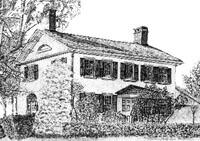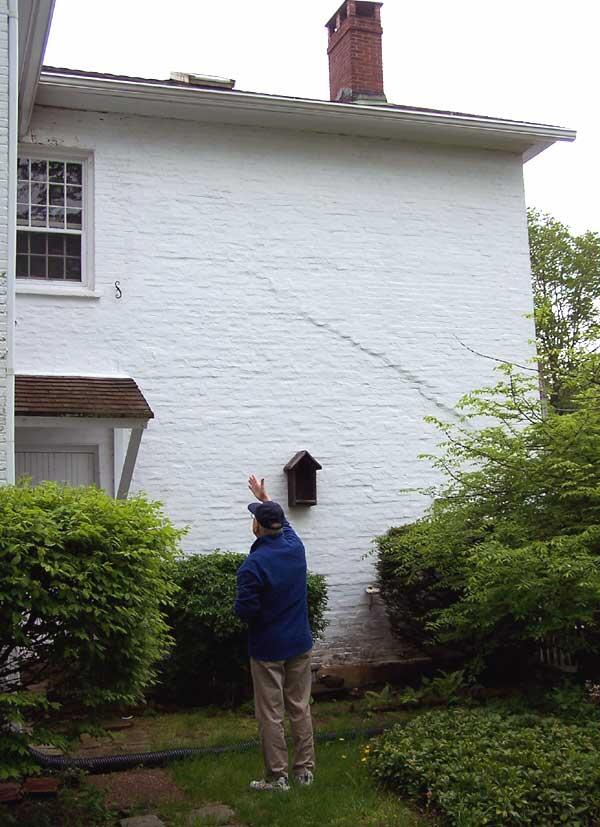
by Jacqueline Langdon
(Published in the Bolton Community News, June 2007)
This information is excerpted from a school assignment researched and written by Ms. Langdon. We thank her for sharing it with us!
The town recently purchased the 20-plus acre Pistritto property in the heart of town. This parcel includes the house at 220 Bolton Center Road, next door to the town hall, known as the Brick Tavern.
 According to research done by Samuel Morgan Alvord around 1920 (see below), the first structure on the property was built around 1770 by Ebenezer Carver. This structure became an ell on the brick house that we see today, which was built around 1828 by Samuel Williams and served as a stop on the Hartford-Norwich stage line. The ell is gone now, but you can still see what may be the outline of the ell's roof on the back of the brick building.
According to research done by Samuel Morgan Alvord around 1920 (see below), the first structure on the property was built around 1770 by Ebenezer Carver. This structure became an ell on the brick house that we see today, which was built around 1828 by Samuel Williams and served as a stop on the Hartford-Norwich stage line. The ell is gone now, but you can still see what may be the outline of the ell's roof on the back of the brick building.
The house on this parcel is part of the Bolton Green Historic District, which includes 219 Bolton Center Road (site of Bolton's first post office), 222 Bolton Center Road (the town hall), 228 Bolton Center Road (the Congregational Church), 233 Bolton Center Road (the Tuthill residence), 266 Bolton Center Road (Bolton Heritage Farm), and 3 Hebron Road (the town green).
The Pistritto property was originally listed at $979,000. The Board of Selectmen initially offered $675,000 for the property, the "fair market" value. The final agreed upon price was $735,000, which is close to the property's officially appraised value. The cost to bond the property is $25,000. There is the potential of revenue totaling $250,000 from the sale of a small portion of the parcel, which would help defray the purchase cost.
The purchase of the property has helped to preserve more open space in the center of town, adding to the 128 acres that is already preserved open space at the Bolton Heritage Farm. On a side note, at its January 9 meeting, the Board of Selectmen voted to formally adopt the name "Bolton Heritage Farm" for the property known variously as the Rose Farm, Valley View Farm, and Minister's Farm.
This expanse of open space will help to keep Bolton as the town that people have grown to know and love.
History of the Property:
Among Bolton archives is Samuel Morgan Alvord's handwritten notebook. It is presumed that he wrote this notebook around 1920. In it, he described different places in town. He describes 220 Bolton Center Road as:
|
The "Brick House" N. of the "Green" at the center. The house is located at the S.W. Corner of 5a. of the land originally reserved by the town for a "common." In 1767 the town exchanged the tract called "Useless Highway" with Samuel Carver Jr. other land for highway.
The first house on this place was the later L. of the Brick House, built probably by Ebenezer Carver about 1770. The "Brick House" was said to have been built about 1828 by Samuel Williams and was a tavern or station for the Hartford-Norwich Stage Line. |
Harold and Mable Griswold owned a house in West Hartford and they summered here in Bolton. They bought the land from Everett McKinney in April of 1935. Gaetano Pistritto was the family chauffeur. He later purchased the house for $2,000 and left it to his wife Stella Pistritto.